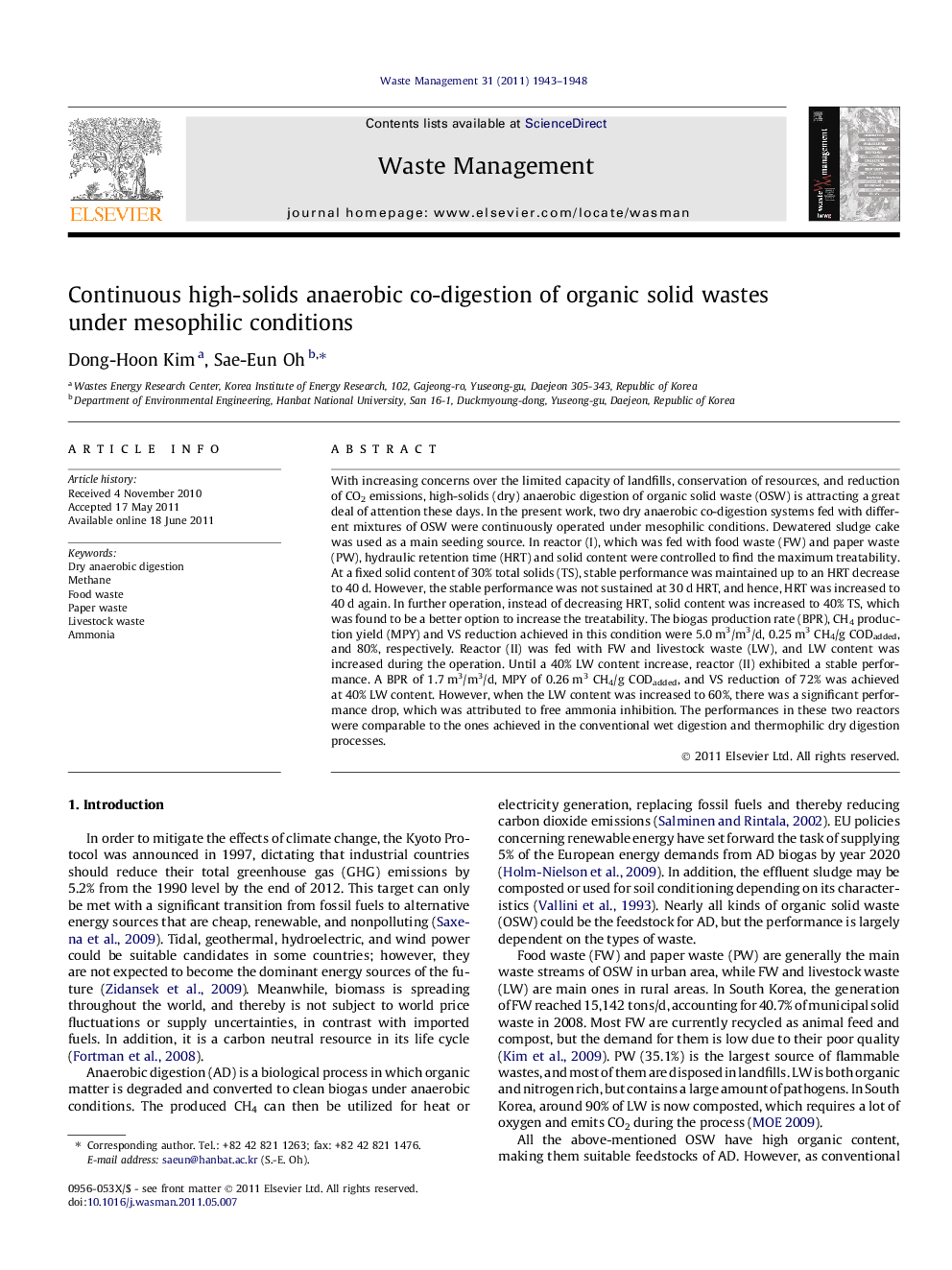| Article ID | Journal | Published Year | Pages | File Type |
|---|---|---|---|---|
| 4472368 | Waste Management | 2011 | 6 Pages |
With increasing concerns over the limited capacity of landfills, conservation of resources, and reduction of CO2 emissions, high-solids (dry) anaerobic digestion of organic solid waste (OSW) is attracting a great deal of attention these days. In the present work, two dry anaerobic co-digestion systems fed with different mixtures of OSW were continuously operated under mesophilic conditions. Dewatered sludge cake was used as a main seeding source. In reactor (I), which was fed with food waste (FW) and paper waste (PW), hydraulic retention time (HRT) and solid content were controlled to find the maximum treatability. At a fixed solid content of 30% total solids (TS), stable performance was maintained up to an HRT decrease to 40 d. However, the stable performance was not sustained at 30 d HRT, and hence, HRT was increased to 40 d again. In further operation, instead of decreasing HRT, solid content was increased to 40% TS, which was found to be a better option to increase the treatability. The biogas production rate (BPR), CH4 production yield (MPY) and VS reduction achieved in this condition were 5.0 m3/m3/d, 0.25 m3 CH4/g CODadded, and 80%, respectively. Reactor (II) was fed with FW and livestock waste (LW), and LW content was increased during the operation. Until a 40% LW content increase, reactor (II) exhibited a stable performance. A BPR of 1.7 m3/m3/d, MPY of 0.26 m3 CH4/g CODadded, and VS reduction of 72% was achieved at 40% LW content. However, when the LW content was increased to 60%, there was a significant performance drop, which was attributed to free ammonia inhibition. The performances in these two reactors were comparable to the ones achieved in the conventional wet digestion and thermophilic dry digestion processes.
► High-solids (dry) anaerobic digestion is attracting a lot of attention these days. ► One reactor was fed with food waste (FW) and paper waste. ► Maximum biogas production rate of 5.0 m3/m3/d was achieved at HRT 40 d and 40% TS. ► The other reactor was fed with FW and livestock waste (LW). ► Until a 40% LW content increase, the reactor exhibited a stable performance.
